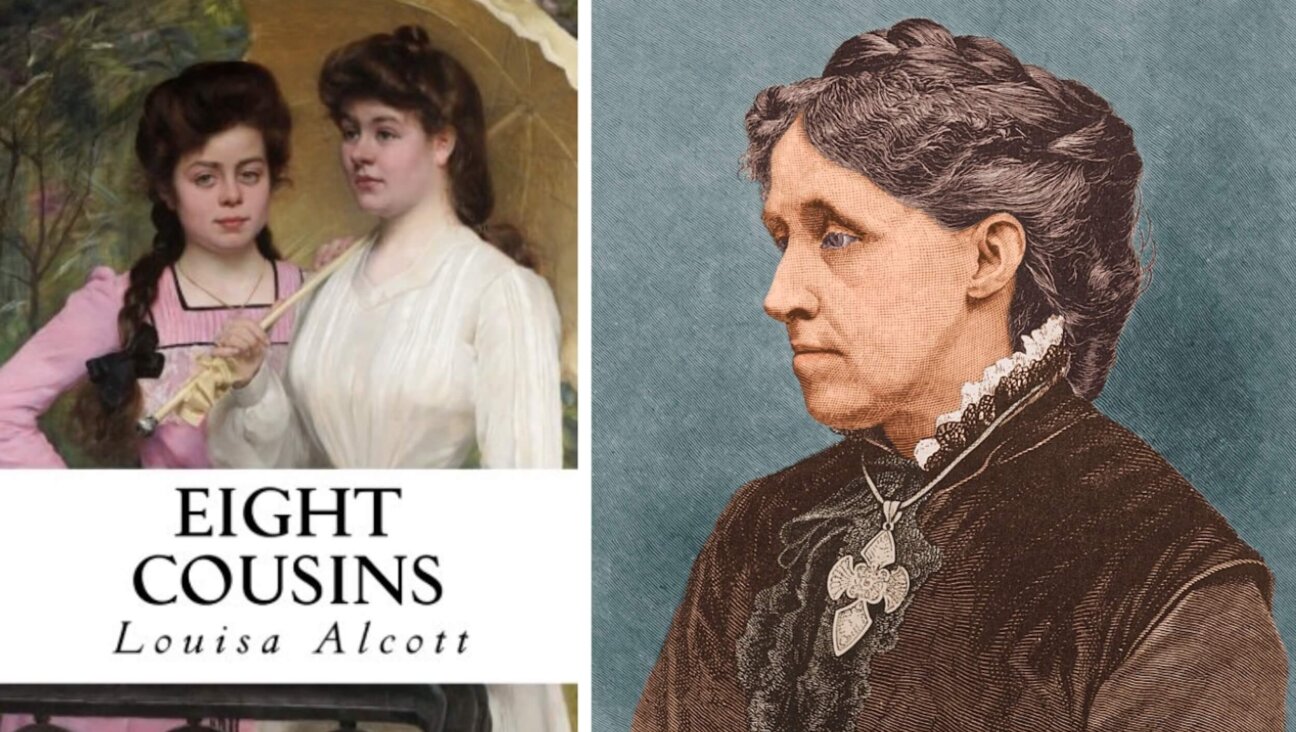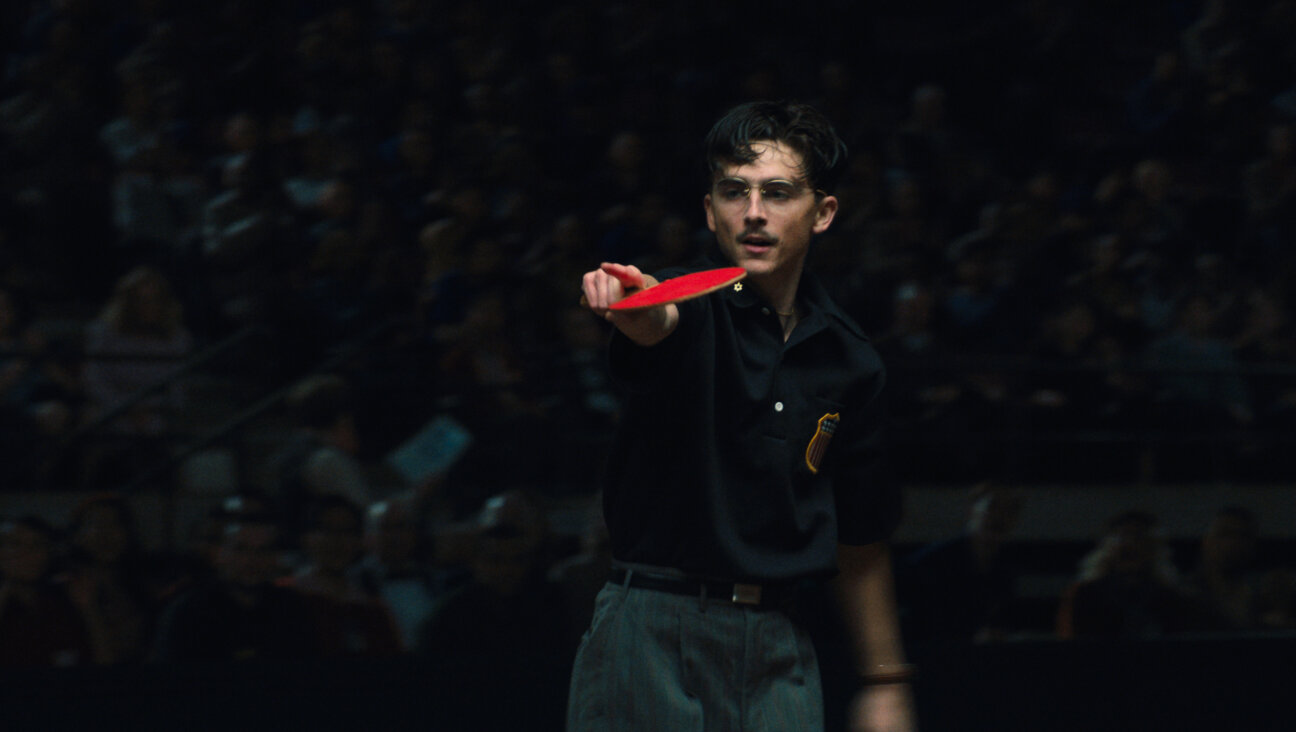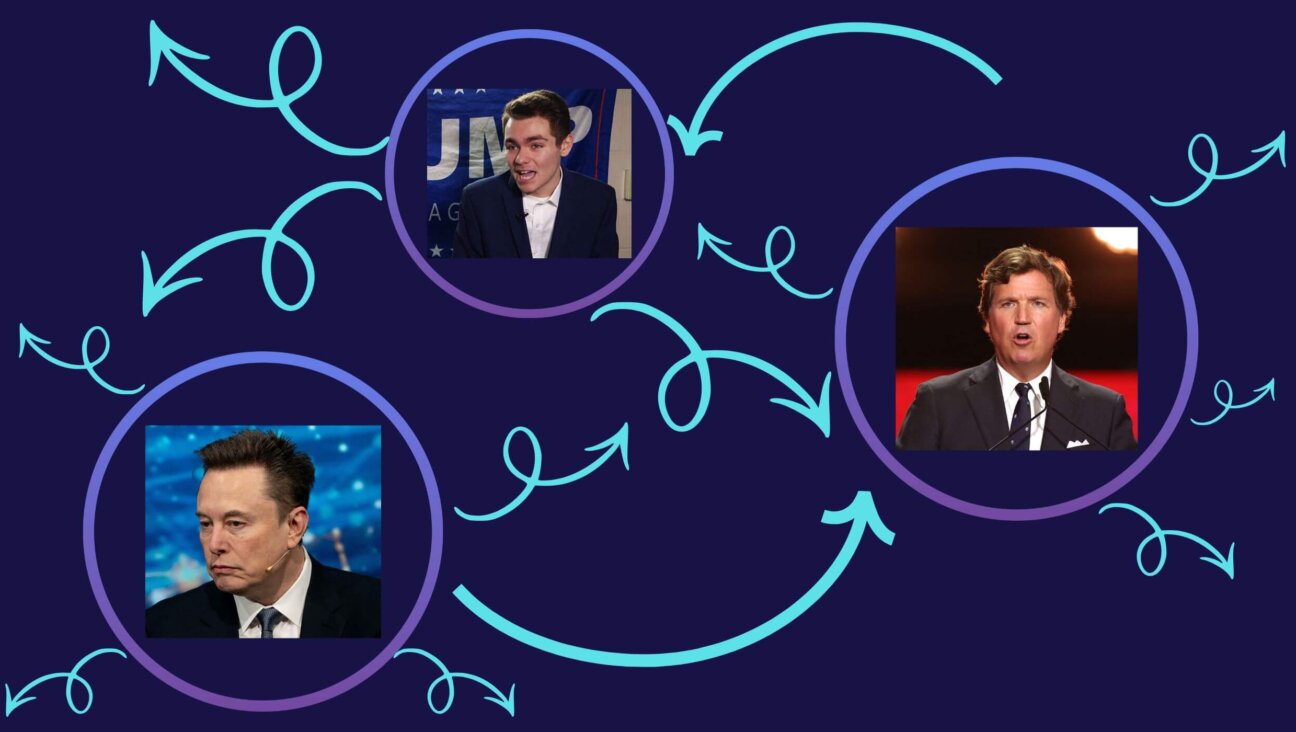That time Yiddishists met extraterrestrials a short while ago in a galaxy not far away
It was a normal summer internship at the Yiddish Book Center … until the Jedi invaded our turf
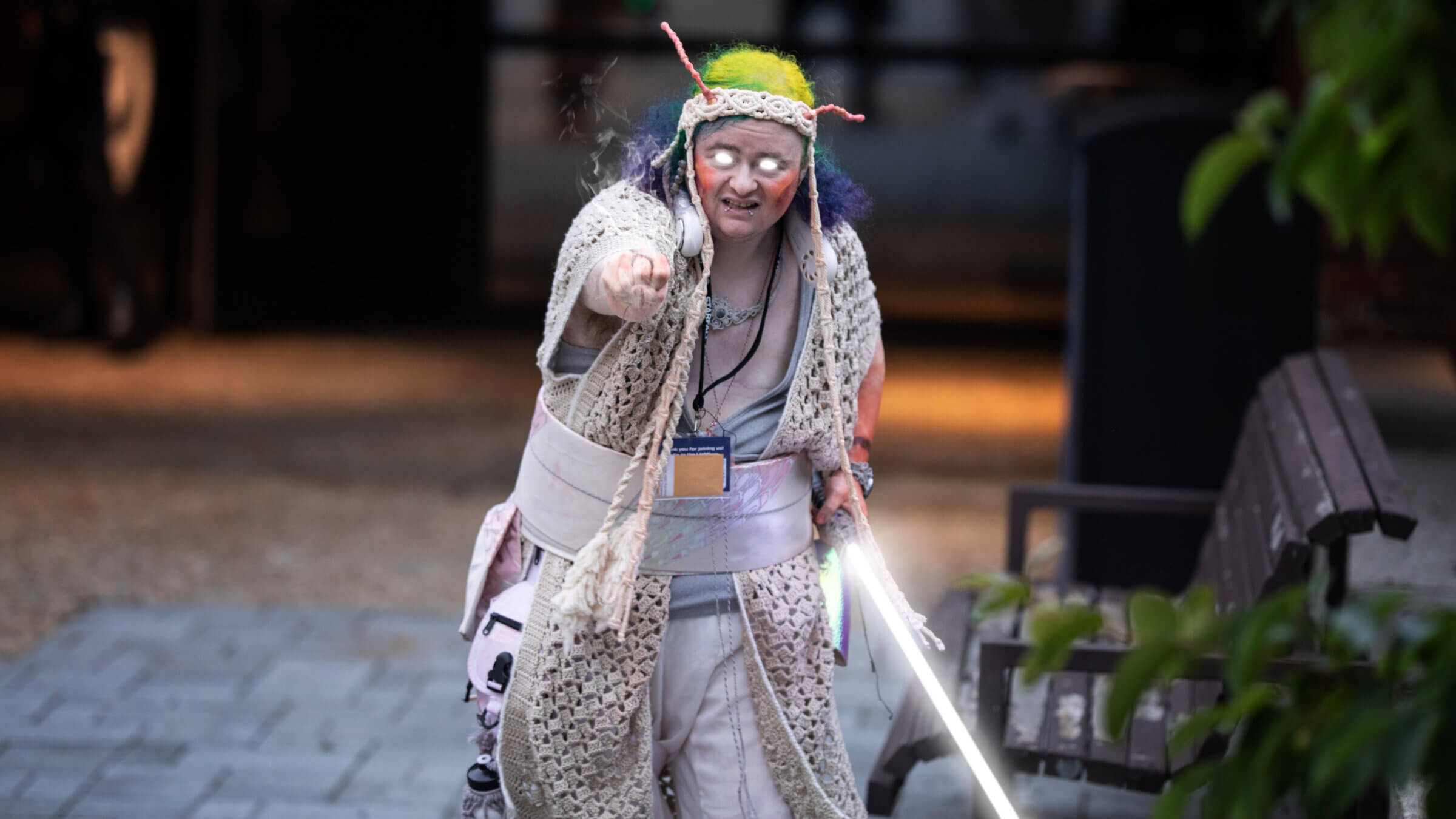
The LARPer Crow, playing a member of the Lakki species. Photo by M.G. Norris Photography
This time last summer, I was setting new personal records of mishegas. Proponents of logic and reason would probably tell me that my insanity was due to the heat, or to the fact that I was trying to speak Yiddish 24/7, or that the windows of our cinder block rooms didn’t have blinds.
But I thought otherwise: There was an indefinably neurotic buzz in the air at the Steiner Program, as if we were all hooked up to one overheated, Yiddish-spewing generator. Buddies of mine who’d gone to this program at the Yiddish Book Center in Amherst, Massachusetts, the year before told me there was a name for this phenomenon — “the Steiner crazies.”
“Steiner crazies” was an accurate description of us: We were college-age students (with the occasional 25-year-old thrown in for spice) who were spending seven weeks absorbing Yiddish into every pore. Like pro wrestlers, many of us took on Yiddish ring names: Robin became Feivel, Olive became Feygl, Madison became Magda. Consistent with my life philosophy of maximum boringness, I went from “Clara” to “Klara.”
Most people were communists. Some were anarcho-communists. The most hardcore were also vegan. There were many mullets, and few heterosexuals.
During the day, we huddled in the air-conditioned sanctum of the Book Center with our professors to talk about the 1938 Molly Picon movie Mamele or conjugate the verb “araynkukn” or learn about the great gefilte-fish divide (galitzianer, the sweet kind, vs. litvak, the savory kind), or, on particularly zesty days, reenact hot lesbian-romance-in-a-brothel scenes from Sholem Asch’s 1906 play, God of Vengeance, or Got fun Nekome.

After class and a few hours of internship work cataloguing old recordings of Yiddish writers, we’d schlep across the road to Atkins Farm, where there was a delicious and inexpensive ice cream stand. In the evening, we would do a bit of homework, dance around outside in frenzied circles if it happened to be Shabbos, and sing Yiddish tunes such as “Eyn Kol Vine,” a song about alcoholic drinks that involved pounding the table harder and harder as we extolled the excellence of wine, yash (spirits), cognac, and kvass. We probably looked like a cult.
It’s worth mentioning that this wasn’t my usual scene. The last time I had an anarcho-communist encounter was in early high school, when a friend tried to get me to read Peter Kropotkin’s The Conquest of Bread and talk about it with him over Zoom. It didn’t go well. He told me I had “reactionary tendencies,” which was probably true, since I remember yelling something at him like, “I am NOT reactionary!”
By Steiner standards, I looked like a conservative. We discussed the merits of communism in theory versus practice. People explained to me what a “polycule” was. Having attended a high school that gave me extensive scientific experience but sub-zero romantic experience, I had assumed it was similar to a “polysaccharide” or a “polyalcohol” — some sort of molecule. The idea of a multi-member romance intrigued me: At the time, my first-ever two-member relationship was in its death throes, and I was spending much of the day sobbing, comforted by Yiddish compatriots. I could barely handle a relationship with one person — if you can’t catch one ball, how do you expect to juggle?
Everything about this summer was a far cry from Harvard, where I spend most of my year. There was one other student from Harvard at Steiner with me. One day, a week or so in, I asked her how she was finding the program. “I like it,” she said, “but I kinda miss the normies.”
But we hadn’t seen nothin’ yet.
Around three weeks into the program, a new tribe set up camp with us on the grounds of Hampshire College. The group included many species, including but not limited to Solanar, who looked like lightsaber-wielding elf Jedi; Rikkan, creatures with rhinoceros-like horns sprouting from their foreheads; Khi’Hinn, reptomammalians with faces that looked like melting jellyfish; Nara, who were blue from head-to-toe; Shumi, members of the genus Ambulaplantae, who were green because they evolved from plant-based life forms; and also a few humans.
We were totally upstaged. We felt like firstborn children thrust out of the limelight by more talented younger siblings; earlier, we had only a team of middle-aged karate men and a conference group from Overeaters Anonymous to contend with in the cafeteria, and we had taken pride in being the weirdest, most daring, most excommunicated-by-mainstream-society group on campus. But we hadn’t counted on anyone painting themselves green. Or having horns.
This rival faction hailed from a “LARP” (live-action role play) program called Starfall Academy. Whereas cosplayers only dress up as characters from a fantasy universe, LARPers take it to the next level by fully inhabiting their characters in longform interactions with others. Over four days, members of the various species studied magical skills, such as healing arts and the commanding of flora and fauna, and received less magical training in martial arts. They would need these skills to fight off the “space fascists” who had invaded many planets, as Crow, a member of the Lakki species, explained to us once in the cafeteria. Two antennae sprouted from Crow’s head, which was dyed in colorful patches like a snow cone. Crow wore a macrame-style headdress, a crocheted cream shawl, and two orange blotches of face paint on both cheeks. Crow looked truly otherworldly.
Maybe there was something otherworldly about Crow and the other LARPers. At the very least, there was something that differentiated them from typical human adults, and it wasn’t just that some of them were green or that they said things like, “If you drop your lightsaber, you have to do 17 push-ups.” I think it was their capacity to inhabit an imaginary universe together that made them special. Almost all children play make-believe games, but the deadening force of self-consciousness ends up robbing nearly everyone of that pleasure. When was the last time, I wondered as I listened to Crow, that I’d played pretend and really believed it?
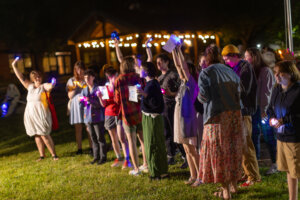
Then it hit me — we were LARPers, too. Whenever we spoke Yiddish, we were recreating the lost world of Molly Picon, Bashevis, Tevye, and our own great grandparents. We were New World people, yet the Old World names of our Yiddish avatars still smacked of schmaltz. When we sang songs like “Vos Vet Zayn Az Der Moshiach Vet Kumen” (“What Will Happen When the Messiah Comes?”), the vanished world of the shtetl seemed near again.
Like LARPers, we looked like nutjobs to the outside world only because we were residents of a universe that they couldn’t see.
On the last night of Starfall Academy, the LARPers extended an invitation to “you normies” to come and watch the culmination of their program, an all-out lightsaber battle on the lawn. Who were the normies? Oh right, us.
We gathered on the fringes of the battlefield, out of the line of danger, to cheer for a group called the “Meteors.” We had no idea what was going on, but we shrieked enthusiastically like we’d heard cheerleader girlfriends do for their quarterback boyfriends over in the normie world. We watched as the many species gathered in two long lines like country dancers and solemnly lifted their lightsabers so that they formed a canopy of blue, green, pink and orange light. The glow from the sabers cast an aurora into the darkness above the battlefield.
Somebody — a leader, maybe — gave a shout. The canopy fell apart, and suddenly the groups were swarming together, pressing out towards another part of campus, away from us. “Aw, shoot, they’re leaving already?” someone next to me in the dark said. I heard the disappointment. Maybe a little bit of envy. I felt it, too. I wanted to follow them and experience the enchantment of believing in their world for just a little longer. But something told me that they were magical creatures, and that wherever they were going, I wouldn’t be able to follow. So I waited for the light of their sabers and the sounds of their voices to disappear between the trees, headed toward one of those unmappable places where normies can’t find the way.

